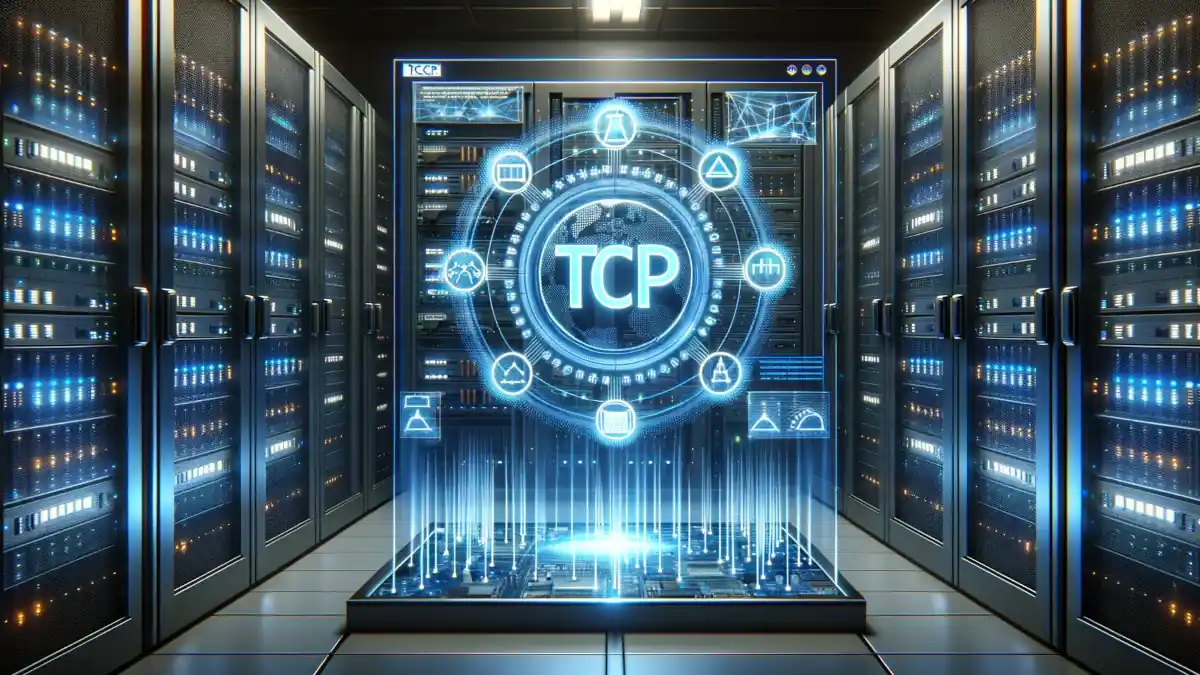Transmission Control Protocol (TCP): The Transmission Control Protocol (TCP) stands as one of the fundamental pillars of the modern internet, quietly ensuring that the vast expanse of digital communication flows seamlessly across networks worldwide. It is the invisible force behind the reliability, order, and security of data transmission over the internet. In this article, we’ll delve into what TCP is, how it works, and why it’s so crucial to our digital lives.
What is TCP?
TCP is one of the core protocols of the Internet Protocol Suite (commonly known as TCP/IP), which governs the way data is exchanged over the internet. Developed in the 1970s by Vint Cerf and Bob Kahn, TCP was designed to provide reliable, ordered, and error-checked delivery of a stream of bytes between applications running on hosts connected by an IP network.
How does TCP work?
TCP operates at the transport layer of the TCP/IP model, sitting above the Internet Protocol (IP) layer and below the application layer. Its primary function is to establish a connection between two devices (typically a client and a server), manage the flow of data between them, and ensure that all transmitted data arrives intact and in the correct order.
Here’s a brief overview of how TCP accomplishes this:
- Handshake: Before any data transfer can occur, TCP initiates a three-way handshake between the client and server to establish a connection. This process involves the exchange of synchronization (SYN) and acknowledgment (ACK) packets to synchronize sequence numbers and agree on communication parameters.
- Reliable Data Transfer: Once the connection is established, TCP breaks the data stream into smaller segments and assigns a sequence number to each segment. These segments are then sent across the network to the destination. Upon receiving each segment, the receiver sends back an acknowledgment (ACK) to confirm successful receipt. If an ACK is not received within a specified time frame, TCP automatically retransmits the segment, ensuring reliable data transfer.
- Ordered Delivery: TCP guarantees that data arrives at the destination in the same order it was sent. It achieves this by numbering each segment and reordering them at the receiving end if necessary before passing the data to the application layer.
- Flow Control: TCP implements flow control mechanisms to prevent the sender from overwhelming the receiver with data. Through the use of window sizes and acknowledgment mechanisms, TCP regulates the rate of data transmission based on the receiver’s ability to process incoming data.
- Connection Termination: Once data transmission is complete, TCP terminates the connection using a four-way handshake, ensuring both parties are aware that the connection is closing.
Why is TCP important?
TCP plays a vital role in ensuring the reliability and integrity of internet communication. Its features, such as error checking, flow control, and ordered delivery, are essential for a wide range of applications, including web browsing, email, file transfer, streaming media, and online gaming.
Without TCP, the internet would be a chaotic and unreliable network, prone to data loss, corruption, and congestion. By providing a robust framework for data transmission, TCP enables the seamless exchange of information that powers our digital world.
Conclusion
In essence, the Transmission Control Protocol (TCP) serves as the bedrock of modern internet communication, quietly handling the intricacies of data transmission to ensure a seamless experience for users worldwide. Its reliability, efficiency, and ability to adapt to varying network conditions make it indispensable in today’s digital landscape. So, the next time you browse the web, send an email, or stream a video, remember that TCP is working behind the scenes to make it all possible.
